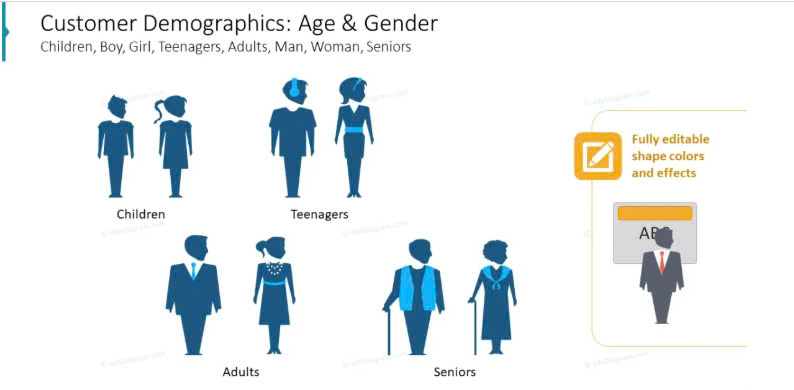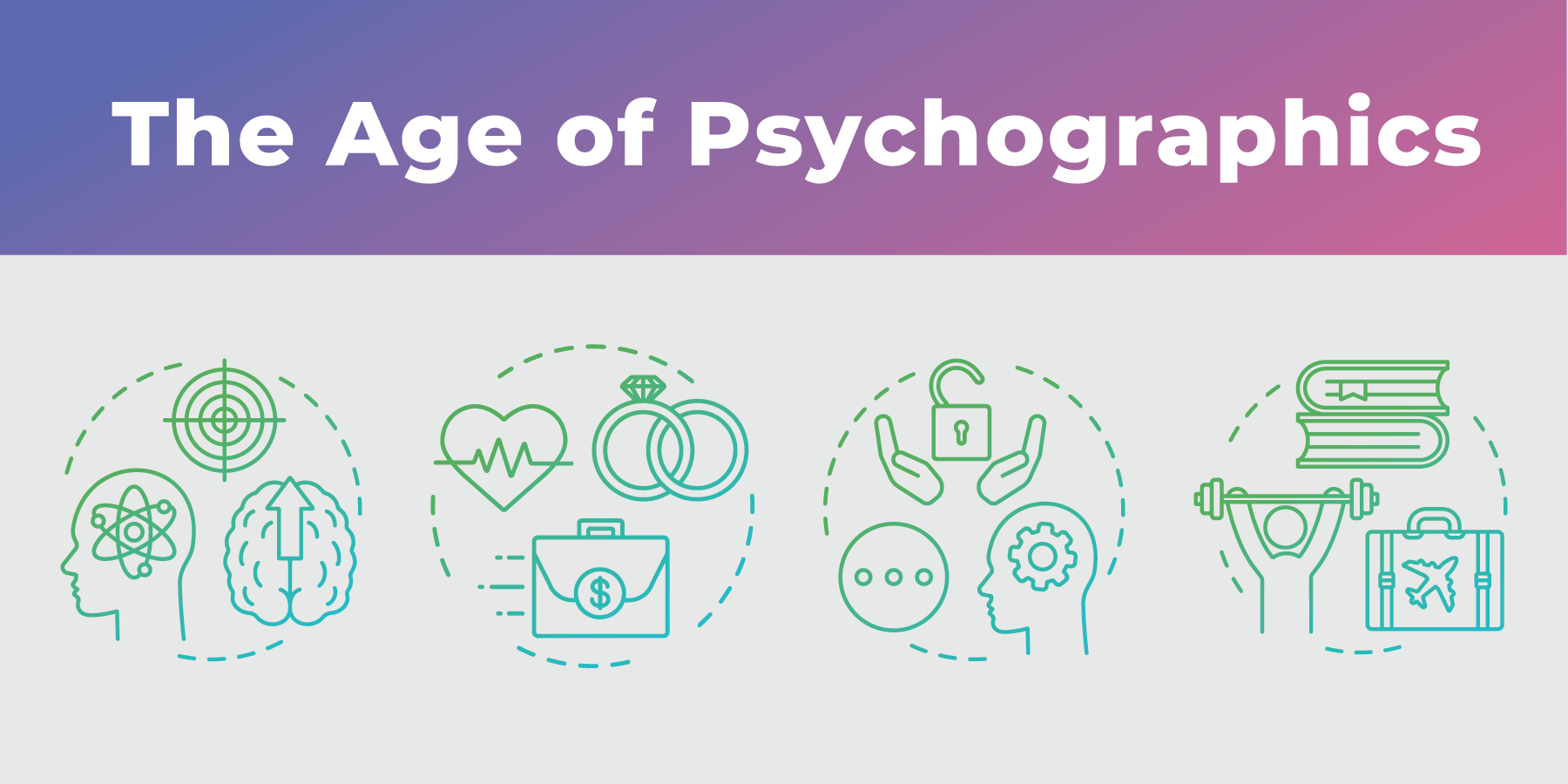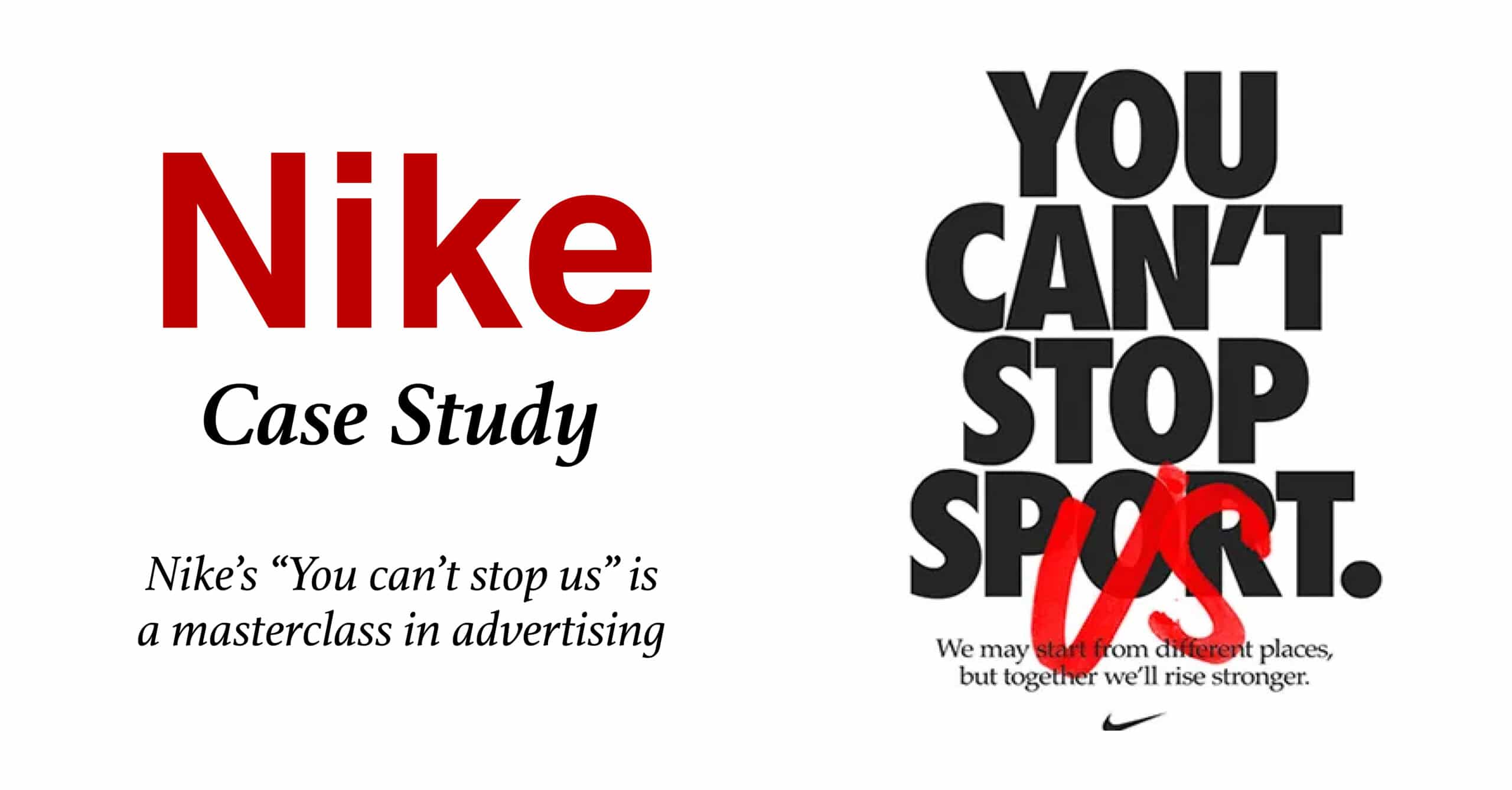Introduction: Understanding the 35-44 Age Group in Marketing
Marketing to the 35-44-year-old demographic is crucial for any business aiming to engage a group that wields significant purchasing power and holds key decision-making roles. As this age group is often well-established in their careers and personal lives, their buying behaviors and expectations are shaped by their professional responsibilities, family dynamics, and technological engagement. With considerable disposable income and a high level of influence in both personal and professional circles, individuals in this demographic represent a vital target market. In this article, we will discuss the key factors influencing their purchasing behavior and provide actionable strategies for businesses to effectively reach and engage this powerful age group.
The Demographics and Psychographics of 35-44 Year Olds
To successfully market to the 35-44-year-old demographic, it is crucial to understand both their demographic and psychographic characteristics. This age group is diverse, spanning a range of life stages, but there are common patterns in their behavior, preferences, and purchasing habits that businesses can leverage for more effective marketing.
Demographic Profile

-
Age Range and Life Stage
Individuals in the 35-44-year-old bracket are typically in the prime of their careers. This is the stage when many have reached mid-to-senior level positions, whether in a corporate setting, as entrepreneurs, or in managerial roles. They are usually well-established in their personal and professional lives, balancing careers, family, and long-term financial goals. -
Professional and Financial Status
Most people in this group have stable incomes, often resulting in higher disposable income than younger generations. Many are in a position of financial responsibility, whether managing household budgets or overseeing business expenses. This makes them a key target for high-ticket items, financial services, and other products that require a significant investment of money. -
Family-Oriented and Home Ownership
This demographic is often at the stage where they are managing or raising families. Many individuals in the 35-44 age group are homeowners, which means they are potential buyers for home-related products and services such as furniture, appliances, and real estate. They also frequently make decisions about household needs, from groceries to children's education. -
Health and Wellness Focus
Health and wellness are important considerations for many 35-44-year-olds. As they approach middle age, they are often more health-conscious, seeking products and services that promote a balanced, healthy lifestyle. This includes fitness programs, healthy food options, and wellness-focused products, making them a key target for the fitness, nutrition, and wellness industries.
Psychographics

-
Values and Priorities
People in the 35-44 age range place a high value on quality, convenience, and authenticity. They have likely accumulated life experiences that make them less swayed by gimmicky marketing tactics. They appreciate brands that offer transparency, ethical values, and products that align with their priorities, such as sustainability, work-life balance, and family well-being. -
Technology Adoption and Usage
While not as "digital native" as younger generations, individuals in this age group are comfortable with technology. They use smartphones, tablets, and desktops for both work and personal activities. They are also highly active on social media platforms such as Facebook, Instagram, LinkedIn, and even YouTube. However, they prefer intuitive, user-friendly platforms that don’t overwhelm them with complexity. -
Social Media and Content Consumption
This demographic engages with content primarily through Facebook, Instagram, and LinkedIn. They follow brands, influencers, and content creators who resonate with their lifestyle, whether for professional insights, parenting tips, or personal wellness. Long-form content such as blog posts, webinars, podcasts, and educational videos are especially effective in capturing their attention. They are more likely to appreciate well-researched and informative content that helps them solve problems or improve their lives. -
Consumer Behavior and Decision-Making
35-44-year-olds tend to be highly research-driven consumers. They usually seek out product reviews, ask for recommendations from peers, and spend time comparing products before making a purchase. Trust is a critical factor for them, and they are more likely to choose brands with which they feel a personal connection or which have established credibility. -
Work-Life Balance
This age group values work-life balance more than any other age group, as they are often juggling careers, family responsibilities, and personal interests. Marketing campaigns that acknowledge and cater to their need for convenience, time-saving solutions, and experiences that enhance both their professional and personal lives are likely to resonate with this audience. Products or services that can simplify their daily tasks, such as subscription-based services or smart home technologies, are highly attractive to them.
Why Marketing to 35-44 Year Olds Matters
Marketing to the 35-44-year-old demographic is not just important; it’s critical for businesses looking to tap into a group with substantial purchasing power and influence. This age group represents a pivotal point in many individuals’ lives, as they typically balance career growth, family responsibilities, and long-term financial planning. Here’s why focusing on this demographic can significantly benefit your marketing strategy:
-
Purchasing Power
The 35-44 age group commands a significant portion of consumer spending. Many in this age range are in well-established careers, earning mid-to-high level salaries, and have greater financial flexibility compared to younger age groups. This makes them a high-value audience for businesses across various industries, from consumer goods and real estate to financial services and healthcare. -
Decision-Makers
Individuals in the 35-44-year-old bracket are often in key decision-making roles within their households and businesses. They are responsible for purchasing products or services for both personal use and family needs. Additionally, many in this group are mid-to-senior level professionals or business owners themselves, meaning their influence extends beyond the household to broader organizational or industry-wide decisions. -
Brand Loyalty and Influence
Consumers in this age group tend to develop strong brand loyalties, which can lead to long-term customer relationships. They are more likely to return to brands they trust and recommend them to peers and colleagues. Thus, engaging this demographic not only generates immediate revenue but also builds brand advocacy that can drive future growth. -
Increased Use of Technology and Social Media
While 35-44-year-olds may not be as digitally native as younger generations, they are highly adept with technology and active across several social media platforms, such as Facebook, Instagram, and LinkedIn. This presents an opportunity for businesses to create tailored campaigns on these platforms to directly engage with this audience. Moreover, they are more receptive to technology-driven experiences that enhance their daily lives, such as e-commerce websites, mobile apps, and seamless digital customer service. -
Multifaceted Lifestyles
Marketing to this age group allows businesses to craft diverse campaigns that address both personal and professional aspects of their lives. From family-focused offers to career advancement tools, the ability to cater to a wide range of needs within this demographic creates significant opportunities for cross-selling and upselling.
Marketing to 35-44 year olds is essential for businesses aiming for long-term success. By understanding their needs, preferences, and behaviors, companies can create strategies that resonate with this group’s unique lifestyle, ultimately driving engagement, loyalty, and revenue.
Key Factors to Consider When Marketing to 35-44 Year Olds

To successfully reach and engage the 35-44-year-old demographic, businesses need to understand the key factors that influence their purchasing behavior and tailor their marketing strategies accordingly. This group is often balancing their career, family, and personal goals, making it essential to address their unique needs and preferences. Below are the critical factors to consider when marketing to this key demographic:
1. Technological Integration
The 35-44-year-old group is digitally savvy and accustomed to using technology in both their personal and professional lives. However, while they are comfortable with digital tools, they do not have the same level of attachment to technology as younger generations. This means they value user-friendly, intuitive platforms that enhance their experience without overwhelming them with complexity.
To effectively engage this audience, businesses should ensure their digital presence is optimized across all devices (smartphones, tablets, and desktops) and that the user experience is seamless. Whether it’s an easy-to-navigate website, a simple app, or fast-loading pages, ease of use is paramount for this group. For example, if you are promoting a product or service online, it’s essential to provide an optimized, mobile-friendly website that makes it easy to browse and purchase.
2. Social Media Usage
While younger generations may gravitate toward platforms like TikTok, 35-44-year-olds tend to be more active on Facebook, Instagram, and LinkedIn. These platforms allow businesses to connect with this audience both personally and professionally. Marketers should leverage these platforms to share content that aligns with the interests and lifestyle of this demographic.
Content should be engaging, informative, and visually appealing to capture their attention. For example, Facebook and Instagram are great for sharing customer testimonials, behind-the-scenes content, and product showcases, while LinkedIn is ideal for B2B content and professional development topics.
Paid social media ads can be incredibly effective, especially when tailored to their interests, profession, or life stage. For example, an ad for a family-oriented service might resonate well with a 40-year-old mother, while an ad offering career development resources could appeal to a professional looking to advance their career.
3. Content Strategy and Quality
For the 35-44-year-old demographic, high-quality, informative content is essential. This age group tends to value substance over flash, so your content should offer genuine value. Whether through blog posts, case studies, eBooks, or webinars, your content should provide answers to the questions they are asking and address the challenges they face in both their personal and professional lives.
This group is also more likely to engage with long-form content that helps them solve problems or learn something new. Offering detailed, educational resources that demonstrate expertise and thought leadership will build trust and credibility. Whether they’re looking for advice on financial planning, career advancement, or parenting, your content should position your brand as a trusted resource.
Furthermore, video content is becoming increasingly important, as 35-44-year-olds enjoy consuming information in digestible formats. Offering explainer videos, tutorials, or interviews with experts can be highly effective in capturing their attention and providing them with valuable insights.
4. Personalization and Customization
Personalization plays a significant role in engaging the 35-44-year-old demographic. This age group values products and services that feel tailored to their specific needs. Whether through personalized emails, product recommendations based on past purchases, or offers that are relevant to their lifestyle, personalization can greatly enhance your marketing efforts.
For example, if your business offers a subscription service, you can personalize the content by recommending products based on their previous purchases or interests. Similarly, personalized email campaigns with targeted offers and content that speaks directly to their unique situation (e.g., promotions for new parents, business owners, or professionals seeking career advancement) will stand out more effectively.
Using data analytics to track consumer behaviors and preferences allows you to deliver more personalized experiences, increasing engagement and conversion rates. This could include sending tailored discounts, offering product bundles based on previous purchases, or suggesting content that aligns with their current needs and desires.
5. Work-Life Balance and Convenience
The 35-44-year-old demographic is highly focused on achieving a balance between their professional and personal lives. Many in this group juggle careers, family responsibilities, and personal goals. Convenience is a significant factor in their decision-making process. Products or services that make their lives easier and more efficient are particularly attractive to them.
For example, subscription-based services (e.g., meal delivery, streaming platforms, and home essentials) are appealing because they save time and effort. Similarly, products that promote work-life integration, such as smart home technology, wellness programs, or productivity tools, can help them manage both their personal and professional responsibilities more effectively.
Marketers should highlight how their offerings help 35-44-year-olds save time, reduce stress, or streamline daily tasks. Whether it’s a time-saving app, a service that improves family life, or a product that enhances their career, emphasizing the convenience and benefits of your product is a winning strategy.
6. Health and Wellness Focus
As individuals in this age group approach middle age, they become more conscious of their health and wellness. Fitness, nutrition, and mental well-being are often top priorities. This makes the health and wellness industry a significant area of opportunity for businesses targeting 35-44-year-olds.
Marketing campaigns that promote a healthy lifestyle, whether through fitness equipment, healthy food options, or mental health resources, are likely to resonate with this demographic. This group is also interested in preventative health measures, such as vitamins, supplements, and wellness products that help them maintain a balanced lifestyle.
A focus on health can also extend to mental well-being and self-care. Offering products or services that cater to stress management, mindfulness, or emotional health can appeal to the desire for a well-rounded, healthy lifestyle.
7. Trust and Authenticity
Above all, the 35-44-year-old demographic values trust and authenticity in the brands they engage with. They are more likely to be skeptical of overly promotional messages or products that seem too good to be true. Therefore, building a strong relationship based on transparency, honesty, and reliability is essential.
Brands that are socially responsible, showcase authentic customer reviews, and demonstrate a commitment to ethical practices are more likely to earn the trust of this group. This is especially true when marketing to 35-44-year-olds, who are often in positions of leadership and are keen on supporting businesses that reflect their values and principles.
Effective Marketing Channels to Reach 35-44 Year Olds
To successfully market to 35-44-year-olds, it’s essential to understand the most effective marketing channels for this demographic.
-
Email Marketing
Email marketing remains one of the most reliable methods of communication with this age group. Personalized email campaigns that provide relevant content and offers can yield high engagement rates. Marketers should segment their email lists to ensure content is tailored to the individual’s specific needs, increasing the chances of conversion. -
Social Media Marketing
As mentioned, platforms like Facebook, Instagram, and LinkedIn are the most widely used by this demographic. Utilize these platforms to create compelling ad campaigns and posts that speak directly to the interests of this group. Visual content, such as video ads and infographics, tends to perform well in capturing attention. -
Paid Advertising (PPC)
Paid advertising campaigns on Google and social media platforms are an excellent way to target the 35-44-year-old demographic. Google Ads, LinkedIn Sponsored Content, and Facebook Ads allow marketers to tailor their messages to specific interests, locations, and professional roles, ensuring they reach the right audience. -
Content Marketing
Long-form content, such as blog posts, eBooks, and case studies, can engage 35-44-year-olds by providing them with the information they value. This demographic is likely to appreciate content that helps them solve problems, whether professional or personal. Video content and podcasts are also growing in popularity, offering additional opportunities to connect with this audience.
Challenges and Pitfalls in Marketing to 35-44 Year Olds
While the 35-44-year-old demographic presents significant opportunities for marketers, there are several challenges and pitfalls that businesses must navigate when crafting their strategies. Understanding these obstacles can help marketers avoid common missteps and ensure their campaigns resonate with this group. Below are the primary challenges and pitfalls businesses should be aware of:
1. Overcoming Skepticism
As individuals in the 35-44-year-old age group are typically more experienced consumers, they tend to be highly skeptical of marketing messages. This skepticism often stems from their previous exposure to numerous advertising tactics, many of which may have felt manipulative or disingenuous. To effectively engage them, marketers must build trust through authenticity and transparency.
Overcoming this skepticism requires offering more than just promotional content. Brands should focus on value-driven messages that are aligned with the customer’s needs and priorities. Customer reviews, user testimonials, and case studies are powerful tools that can help establish credibility and show real-world results. Furthermore, providing transparent pricing and offering risk-free trials or money-back guarantees can alleviate doubts and foster confidence in the brand.
2. Avoiding Over-Saturation of Content
The 35-44-year-old demographic is exposed to a constant stream of marketing messages through various channels, including social media, email, and digital ads. One of the biggest challenges in reaching this group is over-saturation—bombarding them with too many ads or too much content. Inundating this group with repeated messaging can lead to ad fatigue and disengagement.
To avoid this pitfall, marketers should focus on creating relevant, high-quality content that aligns with the interests and lifestyle of this demographic. Instead of overwhelming them with daily ads or promotional content, businesses should prioritize value-driven interactions and provide content that educates, entertains, or solves problems. Marketers should also be mindful of ad frequency—too many ads can result in negative brand perception, while an appropriate level of engagement can nurture brand loyalty.
3. Navigating Technology Overload
While this age group is digitally savvy, they are not as attached to new technologies as younger generations. As a result, they are often overwhelmed by technology overload—too many apps, platforms, or tools that complicate their experience rather than simplify it. Businesses must ensure their digital touchpoints are intuitive, easy to navigate, and user-friendly.
A common mistake is creating overly complex or “feature-heavy” websites, apps, or campaigns that require time and effort to understand. This can frustrate users who are seeking convenience. Instead, marketers should prioritize simplicity in both design and messaging. Offering seamless experiences across platforms (e.g., mobile apps, websites, and social media) and ensuring that products or services are easy to access and use will resonate more effectively with this demographic.
4. Balancing Professional and Personal Messaging
As many individuals in this age group are balancing careers, family responsibilities, and personal interests, businesses must strike the right balance between professional and personal messaging. A marketing campaign that focuses too heavily on one aspect—whether it’s work or family—may fail to fully connect with this demographic, which typically values both their career and personal life equally.
For example, a product that helps with career advancement but ignores the family aspect may not resonate with a working parent, while a campaign that focuses solely on family may not appeal to a professional looking to advance their career. Marketers should create campaigns that acknowledge the dual nature of this demographic's lifestyle, such as offering products or services that make both their work and home life easier or more fulfilling. A holistic approach will help marketers engage this audience on a deeper level.
5. Addressing the Need for Convenience
While the 35-44-year-old demographic values high-quality products, they also prioritize convenience in their purchasing decisions. As they juggle busy careers and family responsibilities, convenience often trumps other factors when it comes to decision-making. Businesses that fail to address the need for ease may struggle to capture the attention of this group.
For example, offering streamlined purchasing processes, quick delivery options, and time-saving products is essential. Marketing campaigns should highlight how the brand’s offering will save time or make life easier, whether it's through subscription services, automated tools, or products that solve common problems efficiently. Failure to emphasize convenience could result in this group looking elsewhere for simpler solutions.
6. Managing the Generational Divide in Communication Preferences
Although 35-44-year-olds are comfortable with digital tools, they may not always engage with the same communication channels or formats as younger consumers. Marketers must carefully consider which platforms and formats resonate best with this group.
For instance, while younger generations may be highly active on platforms like TikTok and Snapchat, the 35-44 group tends to prefer Facebook, Instagram, and LinkedIn. Moreover, they are more likely to consume content through email, long-form blog posts, and informative webinars, rather than short-form, fast-paced content like that found on TikTok or Twitter.
Marketers should adapt their content strategies to meet these preferences. This may mean focusing on LinkedIn for B2B communications, creating in-depth blog posts for informational purposes, or using Instagram and Facebook to share visually appealing, yet thoughtful content. Not tailoring your message to the communication preferences of this demographic could lead to ineffective marketing campaigns.
7. Managing Privacy Concerns and Data Sensitivity
As privacy concerns grow, the 35-44-year-old demographic, especially those in leadership positions, tends to be highly cautious about data security and how brands handle their personal information. Many are aware of the risks associated with data misuse and are likely to disengage from companies that do not clearly communicate their data protection practices.
Marketers should be transparent about how they collect, store, and use consumer data. Offering opt-in options for personalized services or content can help build trust, as can ensuring that customers are aware of their rights and how their data is being used. Avoiding intrusive data collection methods or misleading privacy policies is key to maintaining positive relationships with this demographic.
Case Studies: Successful Marketing Campaigns Targeting 35-44 Year Olds
Understanding how leading brands successfully engage the 35-44-year-old demographic is key to crafting impactful marketing strategies. This age group is influenced by diverse factors such as career progression, family life, and personal wellness. Below are several case studies of brands that have successfully targeted this age group, showcasing effective tactics and strategies that can serve as inspiration for businesses looking to reach this valuable market.
1. Nike: Empowering Athletes at Every Age

Campaign: Nike's "You Can't Stop Us"
Nike has long been known for its ability to connect with diverse demographics, and its marketing campaigns targeting the 35-44-year-old demographic are no exception. Nike's "You Can't Stop Us" campaign, which aired globally, focused on celebrating athletes of all ages, highlighting the resilience and drive of people continuing to pursue their fitness goals, regardless of age.
Strategy:
-
Inclusivity: The campaign featured athletes of various ages, including many in the 35-44 age range, showing that age is no barrier to athletic performance. This approach resonated with the target demographic, which includes parents and professionals who may be balancing fitness with other responsibilities.
-
Emotional Connection: By focusing on personal stories of overcoming obstacles and showing the importance of staying active at any age, Nike connected emotionally with the 35-44 demographic.
-
Omnichannel Engagement: Nike used a multi-channel approach, including social media, TV ads, and in-store displays, ensuring their message reached this demographic across both digital and traditional platforms.
Outcome:
The campaign's success was evident in its strong engagement on social media, as well as a noticeable increase in sales of their athletic wear and fitness-related products. Nike’s ability to combine personal empowerment with the value of an active lifestyle effectively spoke to the priorities of the 35-44-year-old market.
2. Apple: Balancing Work and Personal Life

Campaign: Apple's "Better You" Campaign
Apple’s marketing is typically effective in reaching the 35-44 demographic, a group known for its tech-savviness and reliance on digital tools to balance their personal and professional lives. In their "Better You" campaign, Apple emphasized how their products, such as the iPhone, Apple Watch, and MacBook, support a healthier, more productive lifestyle.
Strategy:
-
Work-Life Balance: Apple’s campaign targeted the 35-44-year-old market by showcasing how their products could help consumers stay productive at work while also maintaining personal well-being. The Apple Watch’s health features, including heart rate monitoring and sleep tracking, were highlighted, appealing to this age group's growing interest in wellness and self-care.
-
Simplicity and Convenience: Apple’s focus on how its products streamline communication and organization was well-suited to the 35-44 demographic, which values convenience and simplicity in their digital experiences.
-
Storytelling: Apple used real-life stories of individuals juggling work, health, and family responsibilities to create an emotional connection. This approach resonated deeply with consumers who find themselves in similar situations.
Outcome:
The campaign was highly successful, not only in driving sales of Apple’s ecosystem (iPhones, Apple Watches, and MacBooks) but also in reinforcing the brand’s reputation as a lifestyle enabler for the 35-44 age group. This demographic is now one of Apple’s most loyal, with a deep connection to how their products fit seamlessly into their busy lives.
3. Dove: Embracing Authenticity and Self-Care
Campaign: Dove's "Real Beauty" Campaign
Dove's "Real Beauty" campaign is a powerful example of how brands can appeal to the 35-44 demographic by focusing on authenticity, self-care, and body positivity. The brand has consistently created content that celebrates real women of all ages, including the 35-44-year-old demographic, and promotes healthy skin care routines over traditional beauty standards.
Strategy:
-
Emotional Appeal: Dove’s focus on self-esteem and real beauty was highly relevant to women in the 35-44 age group, many of whom are seeking a more realistic and empowering definition of beauty. The campaign promoted the idea that beauty is about embracing one's natural appearance, which resonated strongly with this demographic, particularly mothers and professionals who want to break free from the pressures of unrealistic beauty standards.
-
Inclusive Representation: Dove’s use of real women, with various body types, ethnicities, and ages, made this campaign particularly appealing to 35-44-year-old women, who are often underrepresented in mainstream beauty advertising.
-
Consistent Messaging Across Channels: Dove reinforced its message across television, print, social media, and in-store displays, ensuring that the campaign reached this demographic through multiple touchpoints.
Outcome:
Dove's campaign achieved exceptional success, building brand loyalty among women aged 35-44 by resonating with their desire for authenticity and self-care. The campaign resulted in increased brand engagement, as well as a noticeable shift in consumer attitudes towards beauty, positioning Dove as a trusted brand for women seeking to embrace their natural beauty.
4. Audi: Professional Success Meets Luxury

Campaign: Audi’s "The King of the Road"
Audi has successfully marketed its luxury vehicles to the 35-44-year-old demographic by aligning its brand with professional success and luxury lifestyle. The brand’s "The King of the Road" campaign capitalized on the desire for status and success that resonates with this age group.
Strategy:
-
Career Ambitions and Status Symbol: Audi positioned its cars as symbols of professional achievement and success, appealing to the 35-44-year-old demographic, many of whom are in the midst of advancing their careers. The ad targeted professionals who value status and sophistication.
-
Lifestyle Alignment: Audi's messaging emphasized how their cars fit seamlessly into the busy lives of professionals who are juggling work, family, and leisure. The campaign illustrated the car as a reflection of their lifestyle choices—sleek, powerful, and functional.
-
High-Quality Visuals and Emotional Messaging: Audi utilized stunning visuals and powerful storytelling to evoke feelings of empowerment, success, and luxury, which resonated with consumers in this demographic.
Outcome:
Audi’s campaign resulted in increased sales among high-income individuals, especially professionals in the 35-44 age range. The campaign successfully reinforced Audi’s position as a premium brand that aligns with the career ambitions and luxury aspirations of this age group.
5. IKEA: Targeting Family and Home Improvement Needs

Campaign: IKEA’s "Make Room for Life"
IKEA’s "Make Room for Life" campaign focuses on creating home environments that are functional and affordable. This campaign effectively catered to the 35-44-year-old demographic, many of whom are homeowners or parents, by offering solutions that simplify home life and meet the evolving needs of families.
Strategy:
-
Family-Centered Messaging: IKEA’s campaign highlighted the importance of creating a home that adapts to a family’s needs. It featured real families in everyday situations, with an emphasis on how IKEA products can help make homes more organized, comfortable, and stylish without breaking the bank.
-
Practical Solutions: By showcasing affordable, practical home solutions—such as multifunctional furniture, storage solutions, and kids’ room essentials—IKEA addressed the specific needs of parents and homeowners in the 35-44 age group.
-
Omnichannel Integration: IKEA utilized a blend of TV ads, digital marketing, and in-store experiences to reach their audience across multiple touchpoints. Their online catalog and mobile apps also provided an easy and convenient way for customers to explore products from the comfort of their homes.
Outcome:
The campaign was highly successful in increasing traffic to IKEA stores and online platforms, especially among young families. By focusing on the practical and aesthetic needs of the 35-44-year-old demographic, IKEA solidified its place as a go-to brand for affordable, stylish home furnishings.
Conclusion: Optimizing Your Marketing Strategy for 35-44 Year Olds
Marketing to the 35-44-year-old demographic offers a significant opportunity, as this group holds considerable purchasing power and influence. To effectively engage them, businesses must focus on their unique needs, including work-life balance, family priorities, and personal well-being. Successful strategies should emphasize quality, convenience, and authenticity, offering personalized experiences that resonate with their lifestyle.
Leveraging multichannel marketing through platforms like Facebook, Instagram, and LinkedIn, while providing valuable content such as blogs and webinars, is key. Personalization through data-driven insights and tailoring content to their specific needs can significantly enhance engagement. Furthermore, building trust and being transparent in brand messaging will resonate with this age group, who values authenticity.
In short, a well-rounded, personalized approach that aligns with the 35-44-year-old demographic’s values and lifestyle is essential for driving engagement, loyalty, and long-term business growth.






